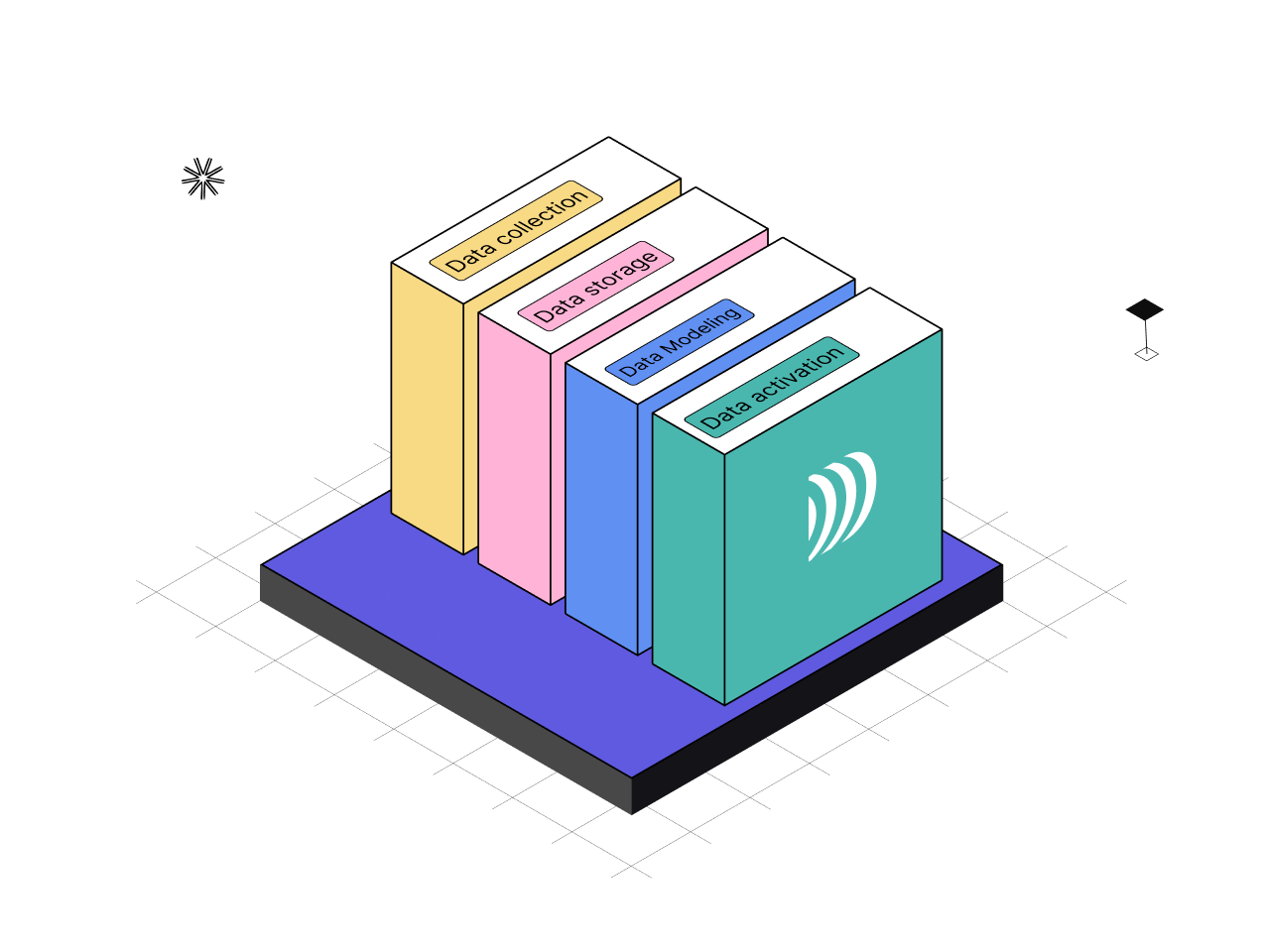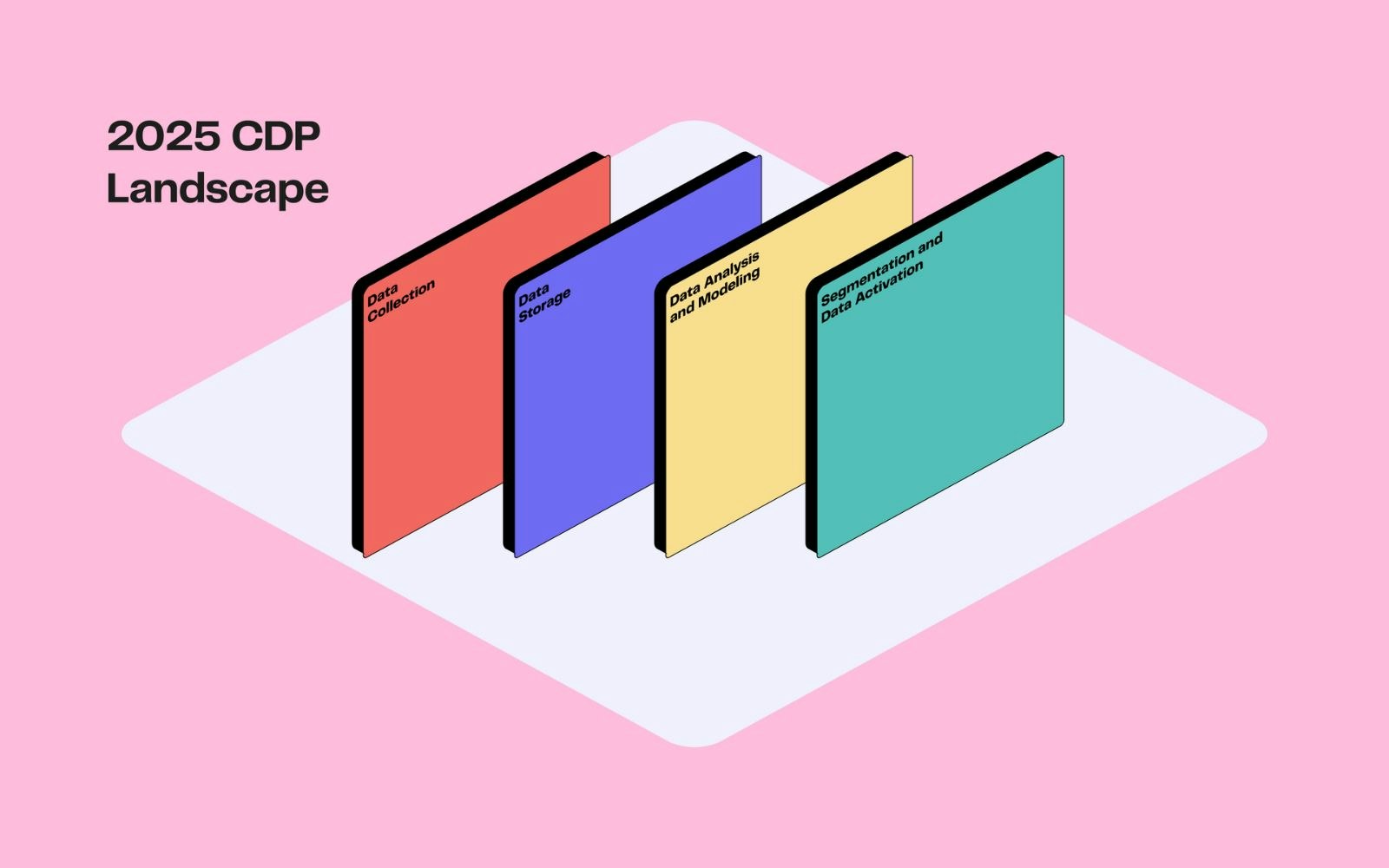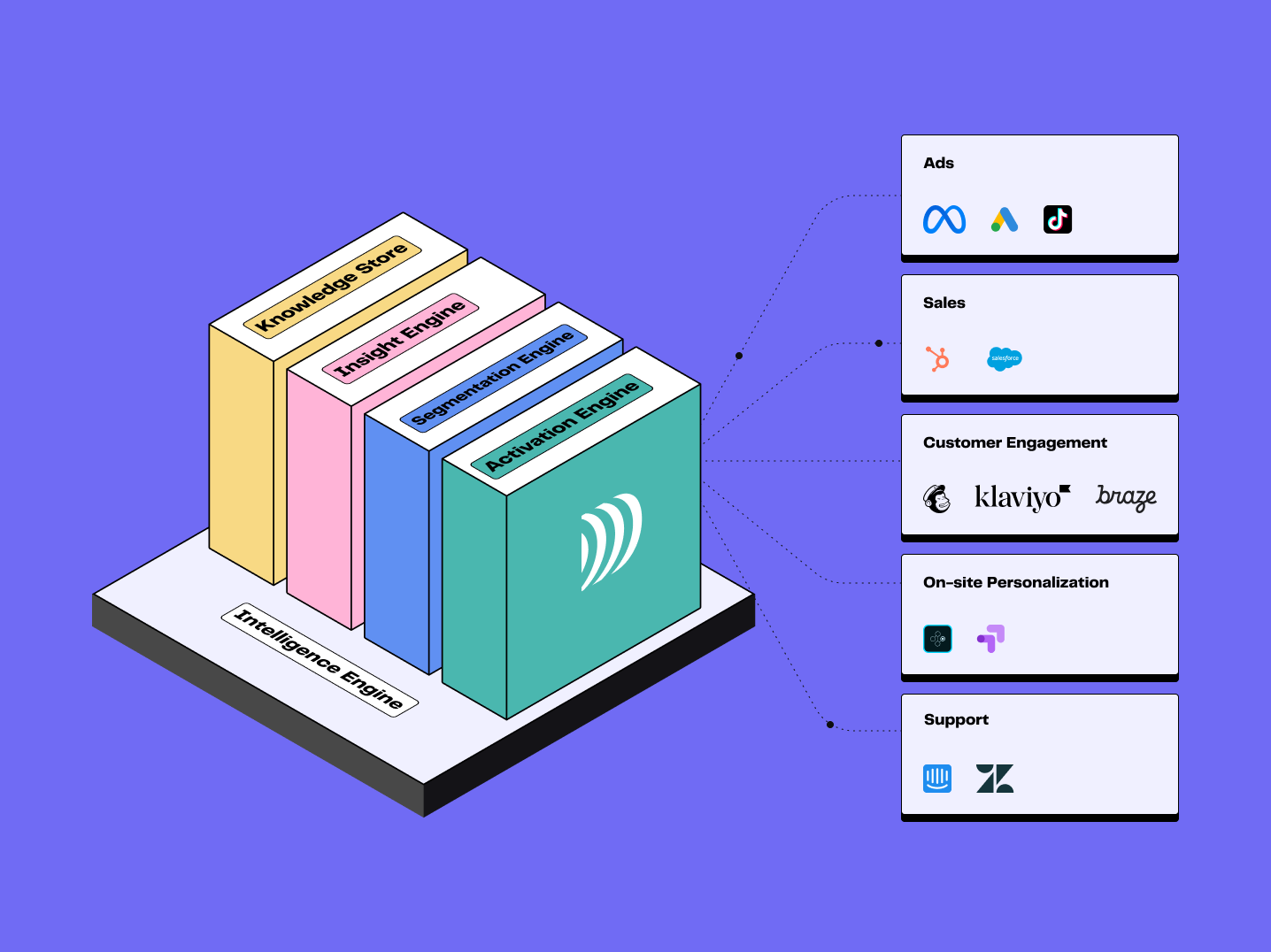
The CDP for better client operations
8min • Last updated on Dec 16, 2025

Alexandra Augusti
Chief of Staff
The data marketing landscape is evolving rapidly, driven by regulations and technology. These changes are encouraging businesses to make greater use of their customer data to improve performance. A recent study confirms that leveraging first-party data can both reduce acquisition costs by 10% and increase revenues from existing customers by 40% (BCG).
To support these changes, the Customer Data Platform (CDP) is an ideal solution for managing customer data and implementing marketing use cases. For any organisation, choosing a CDP is a major project that requires a thorough understanding of their objectives.
Key Takeaways:
A Customer Data Platform (CDP) enables companies to unify and strategically harness both their online and offline customer data.
It creates a single customer view to improve the customer experience and the effectiveness of marketing campaigns.
The use cases of a CDP are part of a continuous improvement approach to customer relationships and marketing processes. They are designed to deliver personalised experiences throughout the entire customer journey.
Its main features focus on data activation, from targeting to reactivation, including performance measurement.
👉🏼 Discover how a Customer Data Platform can become a competitive advantage through better management and activation of customer data. From building a 360° customer view and enriching data to segmentation and activation, explore the different use cases that can be implemented.
Building a unified view of your customers
Companies looking to optimise their customer operations need to focus on consolidating and unifying customer data. These initiatives require bringing together scattered information from multiple sources (CRM, SaaS platforms, online or offline events, external identifiers, etc.) to build a complete and consistent representation of each customer.
This 360° customer view then makes it possible to understand interactions, preferences, and behaviours across different channels and touchpoints.

Customer 360, centralising all customer data
💡 A CDP centralises and integrates customer data from multiple sources in real-time. It provides a unified view and makes it easier to implement personalised marketing initiatives.
Unlike a DMP (Data Management Platform), which focuses mainly on anonymous data and segments for programmatic advertising, a CDP delivers a deeper, individual understanding of the customer, enabling more targeted and effective interactions.
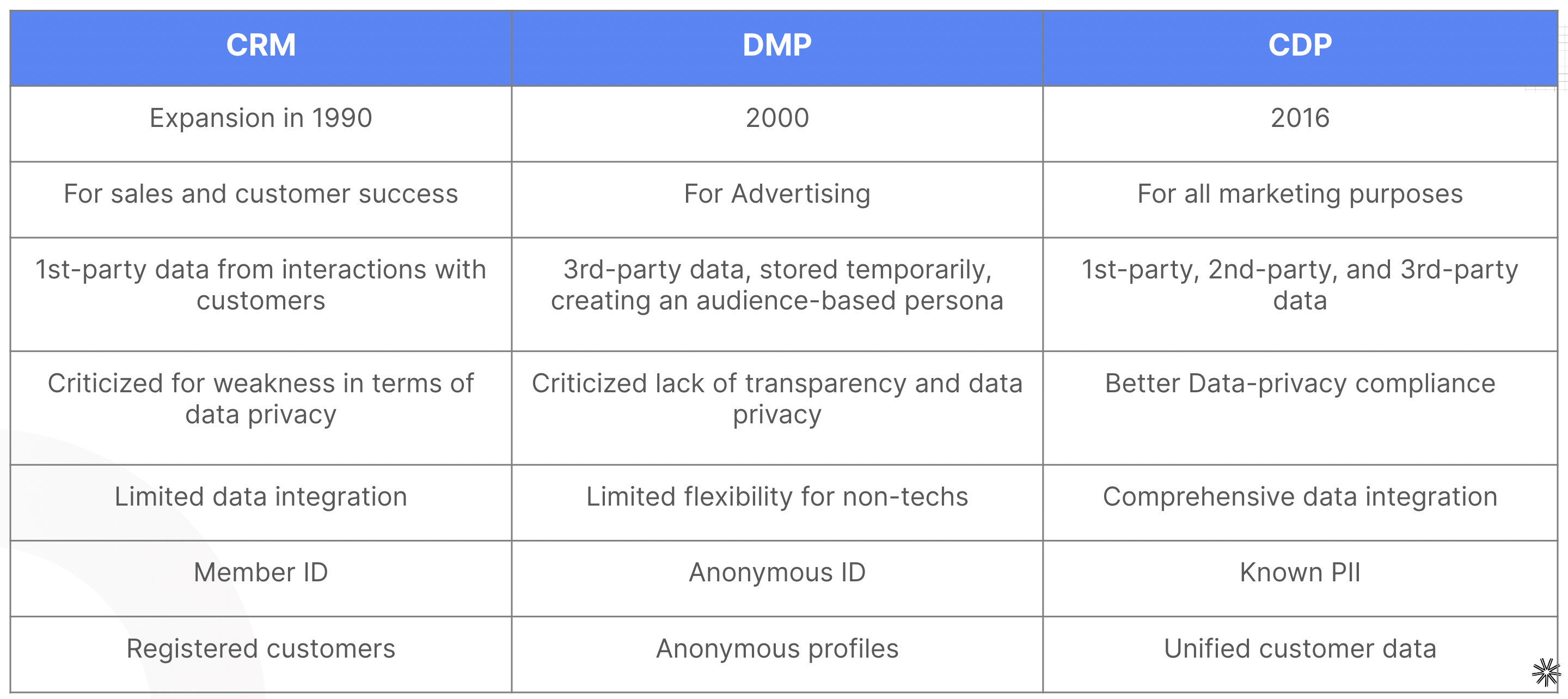
CRM vs CDP vs DMP
Data consolidation involves gathering information from multiple sources to build each customer’s Golden Record. This corresponds to an identity graph: a unique, organised, and complete profile (demographic and transactional data, as well as social interactions, preferences, and product feedback). Reconciling online and offline data also makes it possible to measure the impact of multichannel strategies.
On the other hand, unification aims to align this data in a uniform format, favouring efficient analysis and use of all data. This data can then be used in any tool, regardless of its original source. For example, CRM data can be used directly on an advertising platform.
This unification step may involve standardising data formats, eliminating duplicates and resolving information conflicts, ensuring greater accuracy in customer understanding.
Using a CDP to build this customer view subsequently makes it easier to comply with regulations (GDPR, CCPA in particular) and respect the confidentiality of personal data. Consent data is centralised and stored, simplifying its management.
💡 With the rise of cloud storage for data, the “modular” approach to CDPs is gaining ground. In this model, the data warehouse serves as the single source of truth, making it possible to build a Customer 360 directly without the need for additional tools. At DinMo, we offer a Composable CDP that integrates seamlessly with your existing data stack.
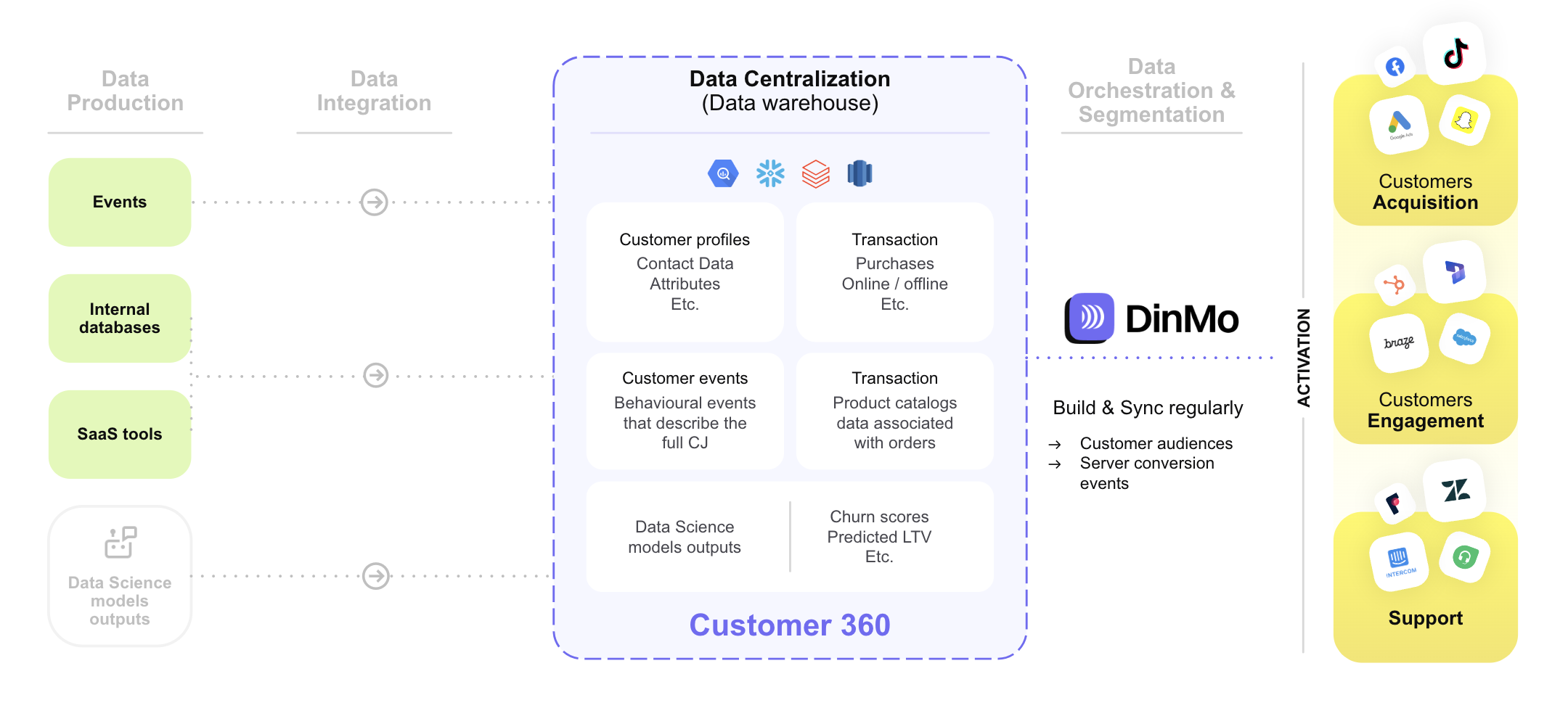
The data warehouse can be used as a Customer 360, as it already centralises data from many sources
Analysis and enrichment of your customer data
This consolidation and proper unification of customer data provide valuable insights. They not only shed light on past customer actions but also make it possible to understand future motivations and predict behaviour. Such information is essential for creating personalised customer experiences and engaging with customers at the right moment.
A CDP can also feed into BI tools, making it easy to visualise performance indicators and flag anomalies. Your CDP should integrate with BI tools for all customer data analyses.
Artificial Intelligence and Machine Learning are now crucial for uncovering these insights from a vast dataset. They reveal hidden patterns and trends from an already comprehensive and up-to-date customer database.
The possibilities are numerous: enhancing your customer view with predictions of interest topics, intent data, predicting the probability of churn or the expected future Lifetime Value (CLV), etc.
💡 As an example, here are some use cases enabled by data enrichment:
Personalisation of communications sent to existing customers based on their interest topics
Real-time product recommendations to known customers based on their intent data
Offering special promotions based on purchase histories (for example, to someone who hasn't purchased in a while)
Ultimately, leveraging these precise and personalised insights enables companies to stand out in a competitive market. They make it easier to deliver tailored offers at the right time, enhance customer satisfaction, and boost the return on investment of marketing campaigns.
Consolidating and unifying customer data is therefore essential to meeting customer expectations, providing them with a significantly enriched, personalised experience and service.
Segmentation of your customer data base
Having a complete database is essential, but it's also crucial to be able to use it effectively! The CDP facilitates customer segmentation through "no-code" functionalities. This segmentation is centralised, and any change in the definition of a segment is reflected across all systems connected to the CDP.
Optimising customer journeys through detailed segmentation helps companies identify and meet the specific expectations of different customer segments. By classifying customers based on behavioural criteria, preferences, or demographic data, brands can design tailored experiences.
A CDP also allows you to identify under-exploited segments that could be targeted more effectively with new offers to increase the added value of existing customers.
Activating segments across different platforms (CRM, advertising, support, etc.) enables more effective strategies because they address the right person, at the right time, through the right channel.
Improvement of the entire customer journey
With a CDP, companies can use this unified data to enrich the customer experience, personalise offers, and interact more precisely, thus enhancing engagement and loyalty.
Better knowledge of customers leads to refined marketing strategies and an improved user experience. Such insight also allows you to anticipate future needs and behaviours of consumers, offering a unique opportunity to proactively engage them.
The role of a CDP is also to activate Customer 360 data across business tools (ad platforms, CRM, customer support, etc.), in order to engage customers throughout their lifecycle. The use cases mentioned below represent only a fraction of the opportunities offered by a CDP to optimise acquisition, ensure loyalty, and improve lifetime value.

DinMo can sent all conversions to any platform
Automation of Marketing Tasks
Although a CDP does not replace a marketing automation system (MAS), it can work in tandem with it to optimise the efficiency of your marketing operations. Marketing automation can often make time-consuming activities like lead qualification and campaign creation less costly.
CDPs offer advanced tools for artificial intelligence and machine learning to help automate marketing tasks. A CDP enables real-time campaign activation, giving marketers the ability to launch highly personalised marketing campaigns across all customer engagement channels.
Improvement of Customer Acquisition
The CDP allows the implementation of various use cases that significantly improve acquisition.
First, a customised lead scoring model can be developed directly within the Customer Data Platform. Identifying the best prospects then allows the company to focus on the individuals most likely to convert. This optimises marketing resources and increases the conversion rate.
Furthermore, the CDP also allows you to calculate a customer score. By identifying the best current customers, a company can create "lookalike" campaigns to target similar prospects, increasing the likelihood of finding new qualified customers.
Finally, the CDP primarily allows you to segment the customer base to address the right people. Therefore, acquisition campaigns must be exclusively directed at individuals likely to convert. Systematically excluding unqualified prospects or existing customers from acquisition campaigns can also be strategic for focusing resources where they are most effective.
Generally speaking, a CDP allows you to use your proprietary first-party data in all your marketing tools, particularly to improve acquisition. Activating first-party data can significantly reduce the CAC.
Improvement of retention rate
To improve retention rates, a CDP plays a central role by enabling companies to anticipate attrition through the identification of early signs of customer disengagement.
By predicting churn, businesses can take proactive steps to retain at-risk customers: offering preventive support, providing high-level customer service, delivering special offers, and more.
Identifying "dormant" customers also allows you to retarget them with specific offers to encourage them to return.
💡 To improve retention rates, it is best to avoid basing your strategy solely on “offensive” approaches. Loyalty campaigns and reward programmes are effective ways to strengthen engagement and reduce churn.
Increase of Customer Lifetime Value (CLV)
Whether in B2B or retail, acquiring new customers is far more expensive than increasing the Lifetime Value of existing ones. It is therefore in a company’s interest to seek to develop the potential of its customers, promoting upsell and cross-sell opportunities.
The CDP enables identifying products and services of interest and behavioural habits, thus personalising:
Customisation of advertising communications
Personalisation of messages, including personal information in each communication (email, SMS, etc.)
Real-time product recommendations (on the website)
Personalised services, for example on the support chat
Personalisation makes interactions with the brand more relevant and engaging for each customer, increasing the value of these relationships over the long term.
By focusing on increasing CLV for each customer, companies can identify specific strategies to maximise the value generated by each individual. For example, enriching customer data with a predictive repurchase rate makes it possible to understand when and how to encourage customers to make their next purchase. By focusing their communication on the most opportune moment, they can thus drive repeat purchases.
Finally, analysing the behavioural profile of customers can reveal cross-selling and upselling opportunities by identifying complementary products or services that might interest the customer, thereby increasing the total customer value.
Message consistency and integration
Ensuring seamless communication across all channels is essential for a smooth customer experience. Customers expect fluidity, whether visiting a website, contacting customer service, or receiving notifications on mobile.
This requires an integrated and consistent communication strategy, aligning tone, style, and content across every touchpoint. This consistency builds trust, reinforces brand credibility and establishes a lasting relationship with customers.
Such a strategy also minimises confusion and optimises the effectiveness of marketing campaigns, ensuring that customers receive relevant messages in line with their expectations.
Better ROI measurement and analysis
Accurate ROI measurement and analysis are essential to assess the effectiveness of marketing initiatives. The use of appropriate metrics makes it possible to monitor the performance of campaigns and capture their impact on revenue and business development.
State-of-the-art analytical tools enable live ROI tracking, providing the flexibility to rapidly refine marketing approaches. This includes examining acquisition cost, customer lifetime value, and conversion rate, among others.
Ultimately, rigorous ROI analysis guides companies towards the most effective channels, encourages more strategic budget allocation, and supports informed decisions for ongoing refinement of marketing strategies.
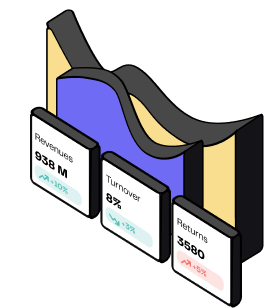
How to make a CDP project a success?
To choose the right CDP, whether packaged (traditional CDP) or modular, there are a few key steps to follow:
First step: Involve the right people
To understand business needs, desired data sources or destinations, and clearly define everyone's needs and objectives (including all CDP end-users).
Second step: identify the use cases the CDP will address
This phase is important to:
Choose the right software vendors: depending on the functionalities required to implement use cases, certain solutions are more or less suitable. Decide whether to buy a Packaged or a Composable solution by looking at our Comparison guide between CDP and Composable CDP (resource at the end of the article).
Organise the project well and, in particular, the deployment of the solution: depending on the importance of the use cases, you can prioritise the functionalities you need to have or develop within your CDP. Doing a pilot project can be a good idea for testing the platform!
💡A modular approach allows you to plan a multi-stage deployment, enabling you to start small. It is then possible to seamlessly add more data, functionalities and extend access to the platform to new teams.
Set up your CDP to suit your intended use
⚠️ The value you get from your CDP is directly linked to the use cases you implement. They are the key to the platform's performance, as they enable you to address the issues faced by your teams (marketing, sales, support, etc.).
To do this, you need to properly formalise the various use cases (problem, solution, impact, platforms involved, etc.).
Third step: measure the impact of the solutions
Focus on your existing data stack and their ability to integrate with it. For example, by listing the required integrations, it becomes easy to rule out shortlisted vendors that cannot connect. The advantage of a composable CDP is that it integrates directly with your stack.
It may also be useful to consider other factors before choosing a type of CDP: deployment time, data hosting, maintenance processes within the platform, price, etc.
To dive deeper into all CDP-related topics (definition, use cases, data security, etc.), download our comprehensive guide to the Customer Data Platform market.
👇

Everything you need to know about the CDP market
Final thoughts
In short, the Customer Data Platform (CDP) represents a strategic tool for unifying customer data scattered across different systems, optimising the management of this data within your organisation, improving the user experience, and boosting marketing efficiency.
This article gives just a glimpse of how a CDP can be used. Each use case needs to be considered according to the type of business, the industry, and the objectives to be achieved.
At DinMo, we offer a composable vision of the CDP, integrating seamlessly into your Modern Data Stack and connecting to any marketing platform. This unlocks the potential of the data already stored in your data warehouse.
🚀 Want to learn more about our Composable CDP approach? Feel free to contact us!


















